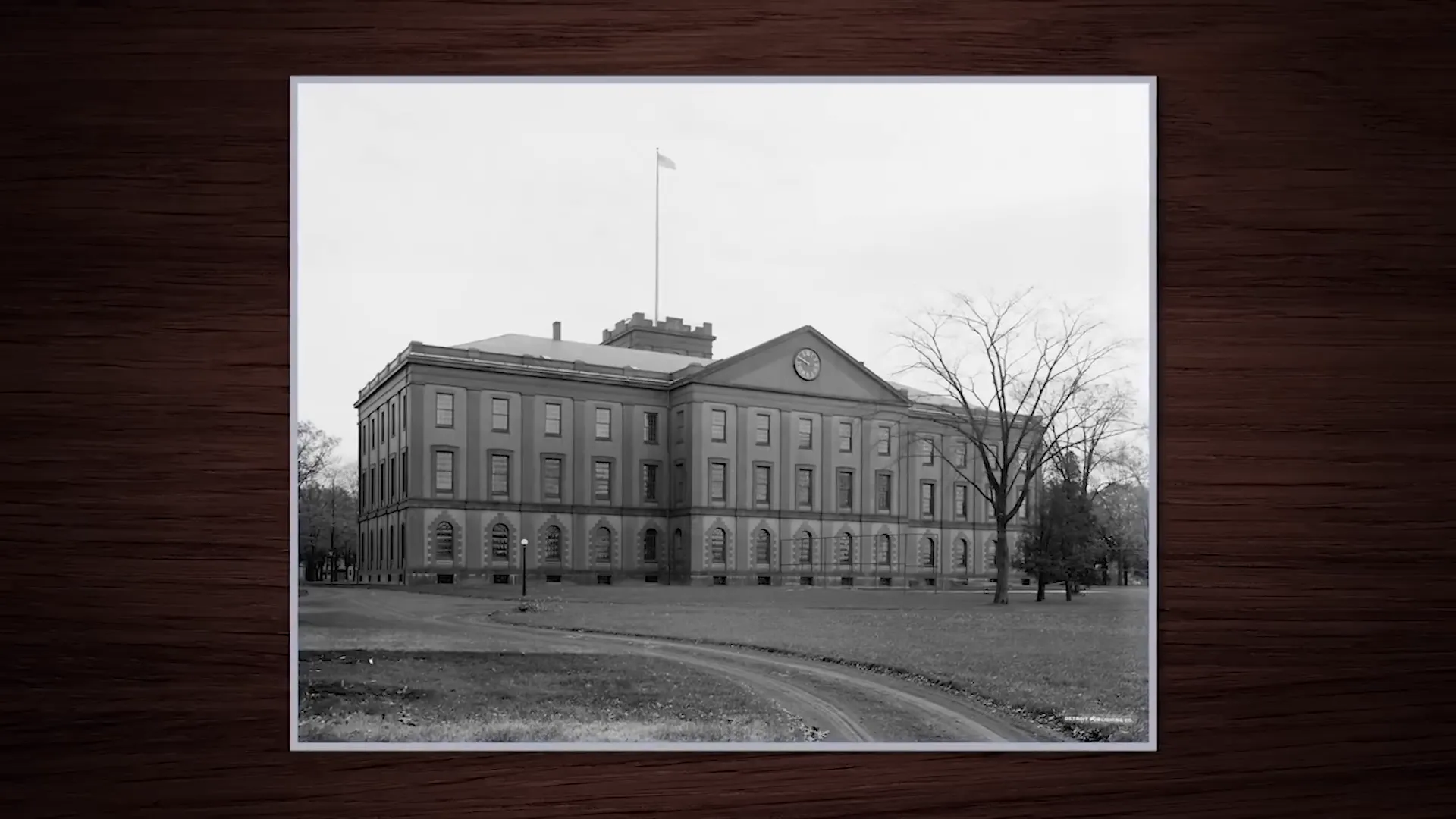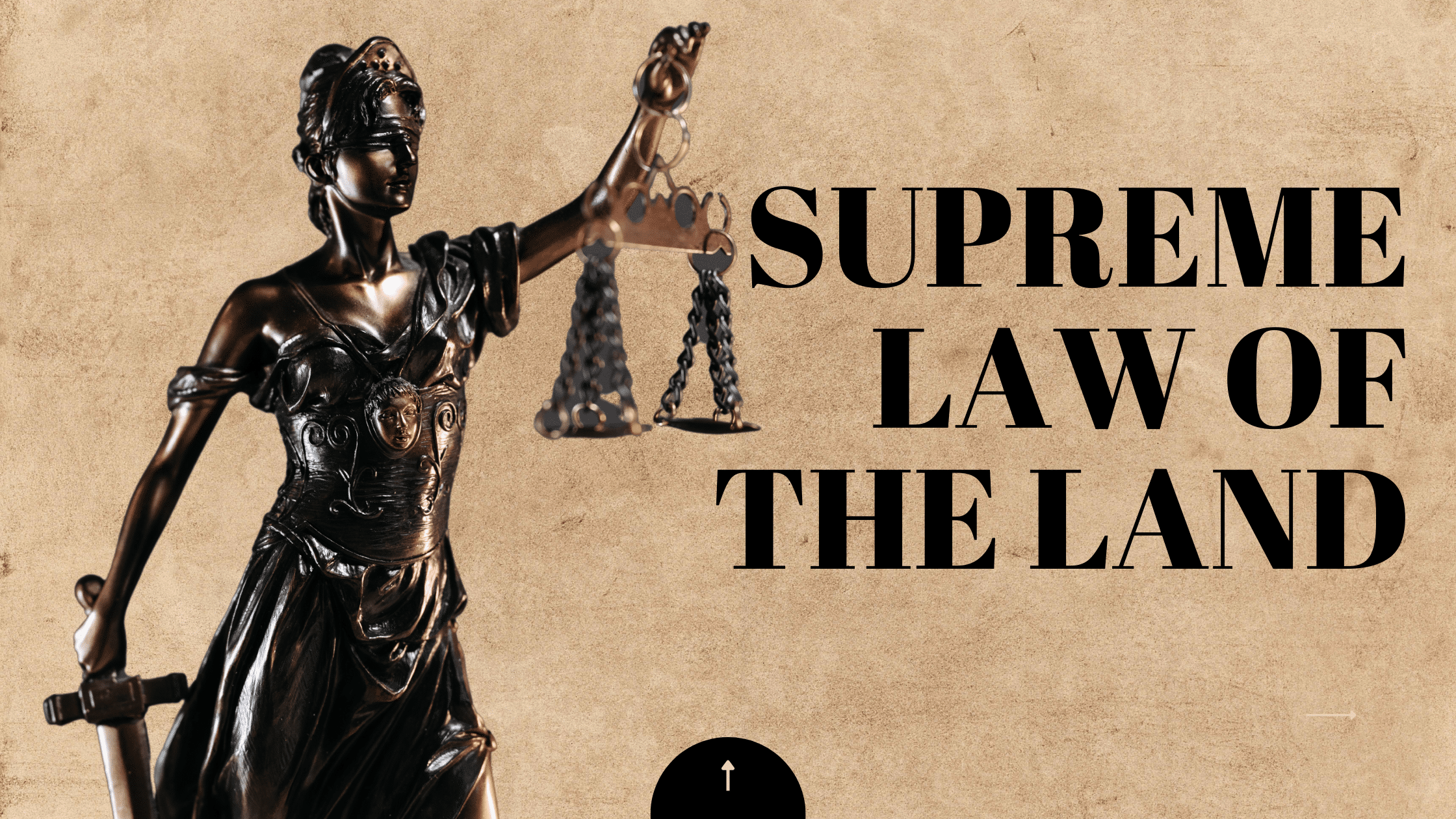Table of Contents
ToggleSources
- https://www.archives.gov/founding-docs/constitution
The National Archives provides authoritative information on the U.S. Constitution, including its drafting process and the influence of the Virginia Plan. - https://www.mountvernon.org/library/digitalhistory/digital-encyclopedia/article/virginia-plan/
Mount Vernon's digital encyclopedia offers a detailed overview of the Virginia Plan, its resolutions, and its impact on the Constitutional Convention. - https://www.britannica.com/topic/Virginia-plan
Britannica provides a comprehensive and reliable summary of the Virginia Plan, its key provisions, and its role in shaping the U.S. Constitution. - https://constitutioncenter.org/interactive-constitution/white-papers/the-virginia-plan-and-the-constitutional-convention
The National Constitution Center offers an in-depth analysis of the Virginia Plan's influence on the Constitutional Convention and the final Constitution. - https://www.loc.gov/exhibits/creating-the-united-states/convention-and-ratification.html
The Library of Congress provides historical documents and context about the Constitutional Convention, including the Virginia Plan and its resolutions.
Key Points
- The Virginia Plan, drafted by James Madison in 1787, proposed a bicameral legislature with representation based on state population.
- It outlined a federal government with three branches (executive, legislative, judicial) to ensure checks and balances.
- Key resolutions included the formation of a bicameral legislature, executive powers, and a national judiciary (Supreme Tribunal).
- The plan proposed proportional representation in the legislative branches, counting enslaved individuals as 3/5 of a person for population.
- The executive branch was initially limited, with a 7-year term and veto power over legislation, but no term limits.
- The judicial branch was established with a Supreme Tribunal and flexibility to create additional federal courts.
- The Virginia Plan allowed for new state admissions and guaranteed republican forms of government for all states.
- Many provisions were modified in the final US Constitution, such as equal Senate representation and shorter terms for officials.
- The executive branch was strengthened in the final Constitution, with the president elected via electors and given expanded powers.
- The Virginia Plan's legacy includes foundational elements like the three-branch government and bicameral legislature in the US Constitution.
Summary
The Virginia Plan, drafted by James Madison in 1787, proposed a strong federal government with three branches (executive, legislative, and judicial) and a bicameral legislature based on state population. Though some provisions, like proportional representation, were modified in the final U.S. Constitution, key elements such as checks and balances and a structured government framework were adopted. The plan’s influence shaped the foundation of American governance, making it a cornerstone of the Constitutional Convention.
The Virginia Plan
After the conclusion of the Revolutionary War, one of the most important tasks of the newly founded country was to develop a new constitution.
The Articles of Confederation, though effective as a temporary guide for the country in its early years, were quickly becoming outdated. Several different proposals were submitted, but the most influential proposal presented was the Virginia Plan.
The Virginia Plan was drafted by future president James Madison at the Constitutional Convention on May 29, 1787. Probably the most influential plan proposed, it called for a bicameral legislature, with the number of representatives of each state being determined by a state’s population.

Get Smarter on US News, History, and the Constitution
Join the thousands of fellow patriots who rely on our 5-minute newsletter to stay informed on the key events and trends that shaped our nation's past and continue to shape its present.
It also called for the formation of 3 branches of government, executive, legislative, and judicial, providing a system of checks and balances.
Resolutions
Officially proposed by Virginia delegate Edmund Randolph, the Virginia Plan eventually consisted of 19 different resolutions outlining the functions and roles of the federal government. Although some of its proposals were amended or changed, many of them were directly incorporated into the United States Constitution.
Resolution 1 of the Virginia Plan
The first resolution called for the formation of a federal government that consisted of legislative, judicial, and executive branches. This provided the system of checks and balances which has become the hallmark of American governance.
Resolution 2 of the Virginia Plan
The second resolution stipulated that the legislative branch should be bicameral, consisting of two separate branches.
Resolutions 3-4 of the Virginia Plan
The third and fourth resolutions specified the details surrounding the terms of service, compensation, and roles of the two different branches of the legislative branch. It is important to note that no specific limits on the number of terms a representative could serve were established.
Members of the first branch of the legislative body were to serve a 3-year term upon election and were to receive a fixed salary paid out of the National Treasury. They were specifically prohibited from holding any other office in a state government or another branch of the federal government during their term of service. They were prohibited from holding any type of state or federal government position for a full year after their term of service expired.
Members of the second branch of the legislative body were to be chosen by the individual state legislatures, had to be at least 30 years old, and served a 7-year term. They were to receive a fixed salary paid out of the National Treasury and were prohibited from holding any other office in a state government or another branch of the federal government during their term of service. They could not hold any type of state or federal governmental position for a full year after their term of service.
Resolution 5 of the Virginia Plan
The fifth resolution gave both bodies of the legislative branch the right to create, draft, and formulate legislation. This was an important provision as many other governments throughout the world at this time had created token legislative branches without the actual authority to create policies.
Resolution 6 of the Virginia Plan
The sixth resolution laid the groundwork for when the legislative branch was authorized to draft legislation, namely, on matters where individual states were unable or unqualified to do so. Also, any matter where an individual state enacting a policy could bring about disharmony with the other states was reserved for the legislative branch. For example, any treaties with foreign nations had to be handled by the national legislative branches to prevent individual states from making separate agreements with foreign countries.
Resolutions 7-8 of the Virginia Plan
The seventh and eighth resolutions established the criteria for determining the number of representatives in each legislative branch. Both legislative branches were to use the same criteria and would therefore have the same number of representatives in each body.
The number of representatives for each body would be determined in proportion to the population of each state, with larger states getting higher numbers of representatives. Free citizens of all ages, sexes, and conditions were considered when determining a state’s population, except for Native Americans who did not count.
These resolutions distinguished between two types of servants and slaves to determine a state’s population. Those who were servants or slaves that were specifically limited to a certain term of service were counted as free citizens toward a state’s population. Those in servitude for an indefinite or permanent period were counted as 3/5’s of a person.
Resolution 9 of the Virginia Plan
The ninth resolution established the executive office as consisting of one person, who was to be chosen by the legislative branch. The executive officer was authorized to serve a term of 7 years, was given the power to enforce laws and appoint officials, and was subject to impeachment for conviction of crimes or neglect of duty. The executive officer, like members of the legislative branch, was authorized to receive a fixed salary paid out of the National Treasury.
As with members of the legislative branch, no specific limits were placed on the number of terms that an executive officer could serve. Theoretically, the legislative branch could appoint the same executive officers to as many 7-year terms as desired.
Resolution 10 of the Virginia Plan
The tenth resolution gave the executive officer one of the most significant powers in the government, the right to veto any legislative act. Once vetoed, the legislation could only be passed by a two-thirds majority vote of both legislative branches.
Resolution 11 of the Virginia Plan
The eleventh resolution established a national judiciary, specifically designated a Supreme Tribunal, to preside over the nation. The judges of this judiciary body were to be appointed by the legislative branch, and no specific term lengths or term limits were established. Judges could hold their posts indefinitely as long as they exhibited good behavior and were also authorized to receive compensation.
Resolution 12 of the Virginia Plan
The twelfth resolution allowed the legislative branch to appoint and establish other federal courts as needed, although they would always be under the authority of the Supreme Tribunal. No other details are specified regarding these additional courts, giving the legislative branch the freedom and flexibility to create an expansive network of courts throughout the country.
Resolution 13 of the Virginia Plan
The thirteenth resolution specifically gave the judicial branch authority over all cases regarding the collection of national revenue and impeachment of national officers. It also gave this branch control over all cases involving national peace and harmony, a broad designation that solidified the power and influence of the federal court system.
Resolution 14 of the Virginia Plan
The fourteenth resolution provided for the admission of new states, stipulating that they must lawfully come from within the authority of the United States. This essentially gave the federal government the authority to acquire territory and to eventually allow the territory to be formed into states. The resolution gave the legislative branch the general authority over the process of admitting a new state and stated that a unanimous vote by all representatives in the legislative branch is not required for admittance.
Resolution 15 of the Virginia Plan
The fifteenth resolution provided the temporary provision of authority and power to the current Continental Congress until the new government could be formed. The Continental Congress would have authority up until a specific day to complete all their necessary duties before the new governmental system took effect.
Resolution 16 of the Virginia Plan
The sixteenth resolution guaranteed that all states within the United States would always have a republican form of government. States would be prohibited from establishing authoritarian regimes and territories would have to submit a republican constitution to join the United States. This provision was in stark contrast to the governments of the original 13 colonies, some of which were allowed to self-govern while others were under the direct governance of the King of England.
Resolution 17 of the Virginia Plan
The seventeenth resolution allowed for the amendment of the US Constitution as deemed necessary. No specific guidelines were given about how this process was to be completed.
Resolution 18 of the Virginia Plan
The eighteenth resolution stated that the legislative, executive, and judiciary powers within the individual states should all be bound by an oath to support the US Constitution. This was considered vital because of the disjointed nature of the original Articles of Confederation and the tendency of individual states to scorn centralized authority during this time. The eighteenth resolution also implied that individual states would generally have the authority to govern themselves on most matters that affected them.
Resolution 19 of the Virginia Plan
The nineteenth resolution established the guidelines for adopting the proposed changes by the Virginia Plan to the Articles of Confederation. The proposed changes would be presented to either an assembly or assemblies of representatives chosen by the people of the United States for approval.
This resolution specifically notes that the assembly or assemblies of representatives would be recommended by “the several” legislatures, a common designation at that time to individual states. Therefore, adopting the new constitution would comprise a state-by-state process of approval. Because no guidelines were provided about a majority of states approving the new constitution resulting in its adoption for all states, individual states could decide to remain independent.
Major Differences from the US Constitution
For about 4 months during the Constitutional Convention, provisions of the Virginia Plan were slowly implemented into the finalized US Constitution along with the other plans. Although some of the original resolutions of the Virginia Plan were eventually included in the final draft of the US Constitution, others were altered or not included at all.
Representation in Congress
Many of the smaller states were opposed to the method for determining representation in the legislative branches, rightly fearing that proportional representation based solely on population would diminish their influence. As a result, the Constitutional Congress amended this provision of the Virginia Plan, only allowing proportional representation based on population for the House of Representatives. The other legislative body, the Senate, would have an equal number of representatives, two, for each state.
Terms for Members of the Legislative and Executive Branches
One of the most significant changes made from the Virginia Plan to the finished version of the US Constitution were the terms for legislative and executive branches. In the legislative branch, members of the House of Representatives would serve a 2-year term instead of a 3-year term, while members of the Senate would serve a 6-year term instead of a 7-year term. The executive officer’s or president’s term was also changed from 7 years to 4 years.
Age Requirements
The only age requirement mentioned in the Virginia Plan was that members of the 2nd branch of the legislative body had to be at least 30 years of age. The final US Constitution kept this requirement for the Senate, but also added the additional age requirements of 25 for the House and 35 for the executive officer or president.
Executive Officer
Another significant change from the Virginia Plan was the designation of the executive officer as president. The position of vice president, not mentioned in the Virginia Plan, was also created.
The selection of the president was also radicalized. Instead of being directly selected by the legislative branch, the president would be chosen by electors specifically designated by every state. Members of the legislative branch were specifically prohibited from serving as an elector, decreasing the influence of the legislative branch over the executive.
Executive vs. Legislative Power
The Virginia Plan originally limited the power of the executive branch, specifically devoting most of the responsibility of governance and running the country to the legislative branch. However, the US Constitution significantly increased the power of the president, specifically giving him several different powers and responsibilities. The president was made commander-in-chief of the army and navy, was authorized to sign treaties with the consent of two-thirds of the Senate and was able to appoint ambassadors and other important ministers.
The initial hesitancy of the Virginia Plan to delegate significant amounts of power and responsibility to the executive officer was probably a reaction to the abuses of King George III. As the new US Constitution was being formulated, the founding fathers probably realized that a strong executive branch was necessary to lead the country.
Legacy of the Virginia Plan
The Virginia Plan was one of the most important documents created during the Constitutional Convention. Many of its suggestions were directly implemented into the US Constitution, including a bicameral legislature and a government consisting of 3 separate branches to ensure checks and balances against abuse of power. Although other plans were submitted, none carried the weight and influence of the Virginia Plan, which laid the foundation for the finalized US Constitution.
What was the Virginia Plan? Quiz
Frequently Asked Questions
What was the Virginia Plan and why was it significant?
How did the Virginia Plan propose determining representation in the legislative branch?
What were some key differences between the Virginia Plan and the final U.S. Constitution?
What role did the Virginia Plan play in establishing the judicial branch?
How did the Virginia Plan address the admission of new states?
How useful was this post?
Click on a star to rate it!
Average rating / 5. Vote count:
No votes so far! Be the first to rate this post.
We are sorry that this post was not useful for you!
Let us improve this post!
Tell us how we can improve this post?







